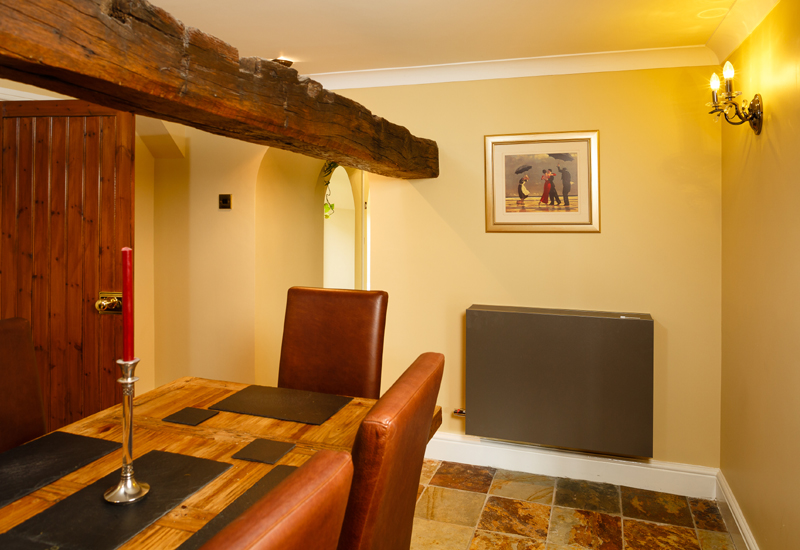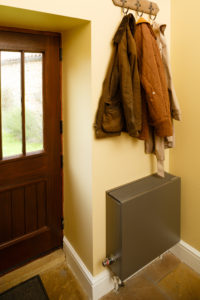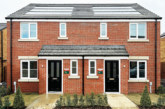
Sally Lloyd, Marketing Manager at Jaga Heating Products UK, highlights some barriers to energy efficiency and affordability in new builds, and explains how to overcome them.
Residential housing is responsible for 25% of the UK’s greenhouse gas emissions, and it is heating costs that make up the largest portion of household energy usage. So how can housebuilders combat this problem, and what will be the outcome for homeowners?
The UK housing market has been somewhat turbulent in the last decade, as the demand for housing has rapidly overtaken supply. This has left buyers struggling to get a foot on the housing ladder. However, the supply and demand imbalance is easing.
According to new housebuilding statistics from the National House Building Council (NHBC), the number of new homes registered to be built in the UK is at an eight-year high. In 2015, 156,000 new homes were registered to be built; a 7% increase against the previous year. In 2015, 75% more homes were registered to be built than in 2009.
The UK government is continuing to make concerted efforts to ensure that residential property is built to the highest quality, and values sustainability. A £3billion Home Building Fund was recently announced – a large-scale government fund which will increase the total number of new homes being built.
Prioritise energy efficiency
New builds between now and 2050 will account for around a third of the UK’s total housing stock, therefore it is pivotal that housebuilders carefully consider how the houses are to be built. Although housebuilders and heating installers are facing increasing pressure to build houses fast to ease the imbalance, it is crucial that quality is placed before haste. Energy efficiency and cost-effectiveness must be prioritised to protect future homeowners.
The UK must do better as a whole to create more energy-efficient housing if it wants to meet current national targets. In agreement with the 2008 Climate Change Act, by 2020 the UK must cut its greenhouse gas emissions by 34%. Furthermore, Prime Minister Theresa May has said that at the end of this year, the UK will ratify the Paris Agreement, in which the UK have pledged to net zero emissions by the second half of the century to avoid the worst impacts of global warming.
Embrace BIM
Housebuilders must look into which energy-efficient technologies will work best in each home. Before installing solutions in sectors such as heating and lighting, it is becoming more commonplace for installers to ensure that these technologies will be viable in each home.
One of the methodologies which can be used to test the feasibility of certain heating technologies is by using Building Information Modelling (BIM). In its broadest sense, BIM describes the process of designing a building collaboratively, with each person inputting into one digital format, rather than separate sets of drawings.
BIM is an invaluable tool for contractors and housebuilders to manage data concerning the life cycle of a project from its construction to operation, and can test how energy-efficient certain technologies will be before they have been built – impacting how buildings are procured, designed and managed.
Options for improvements
Making a property energy-efficient doesn’t have to be difficult. Due to the choice of technology available, there are many ways to improve a property’s energy efficiency whilst also keeping ongoing fuel costs low. To ensure efficiency, housebuilders must make certain that the property is insulated to a high quality throughout; it should be double-glazed and contain an energy-efficient boiler and heating system.
 Examining the energy efficiency of radiators should be a first port of call as it is ‘by far the biggest slice of UK household energy use’, according to a report released by Department of Climate Change (DECC) in 2013. One of the technologies available are low-mass, low water content radiators. These contain a tenth of the water compared to a standard steel panel radiator.
Examining the energy efficiency of radiators should be a first port of call as it is ‘by far the biggest slice of UK household energy use’, according to a report released by Department of Climate Change (DECC) in 2013. One of the technologies available are low-mass, low water content radiators. These contain a tenth of the water compared to a standard steel panel radiator.
Low mass means that the radiators, whilst being robust and powerful, are lighter and smaller – and consequently easier to install. With less water being used, the Low-H2O radiators are able to respond quicker, and can lower heating bills by up to 16%* for the end customer.
Savings on bills
Housebuilders and installers should also take into consideration how important saving money is for cash-strapped homebuyers. For homeowners with these heating systems in place, not only are they helping the environment, but they are also saving money on fuel bills whilst maintaining comfort levels.
To put it into perspective, fuel poverty is estimated to have caused over 9,000 deaths in England and Wales last year, simply because residents were unable to afford heating for their homes. Fuel poverty in the UK is triggered by a combination of poor energy efficiency in homes, low household incomes and high energy prices.
Low mass, low water content radiators can help keep a property’s running costs low, year on year. The technology means that the system reacts quickly to changes in temperature, reducing demands on boilers and ensuring better thermal comfort for the occupants. Homeowners are therefore able to get a lot more energy for their money.
Implementing these sustainable solutions now will ensure that costly and time-consuming retrofitting won’t have to take place at a later date. It also ensures that from the minute a house is built, it won’t have such an impact on the UK climate, or on homeowners’ pockets.
* Certified by independent body KIWA
To find out more, click here








